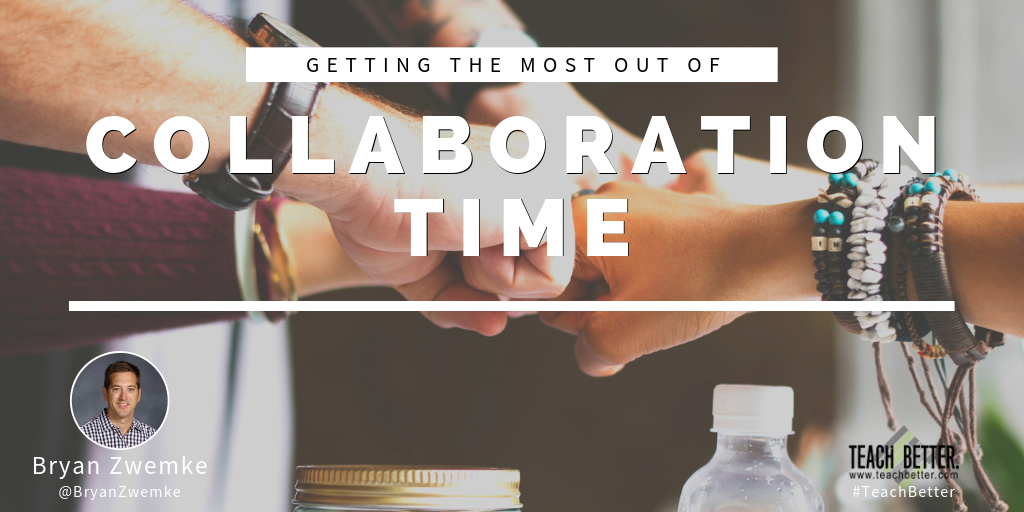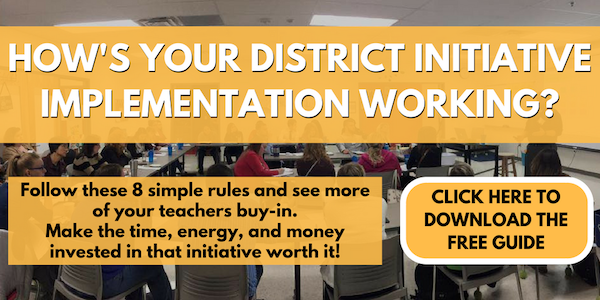In This Post:
- Time to collaborate with colleagues is limited. We need to take advantage of it.
- Working together towards a common goal takes flexibility, dedication, vision, a good sense of humor, and a positive mindset.
- Collaboration time and meetings are not a single event on a single random day.
- Meetings need to have a plan and protocols.
- If you have it, work together with your teams to flex your time.
- When teams are absolutely fried from the daily grind, don’t meet.
Collaboration time among educators is at a premium. Educators must focus on getting the most out of the time we have together before school, after school, or embedded in your day. The profession has evolved from a single room experience with one teacher leading their group of students, to a team of teachers leading their students in collaboration. Working together with adults towards a common goal is not always easy work. It requires flexibility, dedication, vision, a good sense of humor, and a positive mindset. Teams are the path and the answer to the challenging question of how to educate in 2019 and beyond.
Tips for Getting the Most out of Collaboration Time
Collaboration Time is a Verb
Mindset is the key on this one. Do we have PLC today? Are we meeting? Our next meeting is a week away or we don’t meet today. We are always meeting, thinking, and reflecting, in order to make our craft better. Collaboration time and meetings are not single event on a single random day. Rather, highly effective teams have a belief in a culture of continuous improvement that is not measured in number of meetings on specific days. There are times when a more formalized meeting should occur, but those should be to continue conversations and planning around students, professional learning, and/or curriculum.
When teams are absolutely fried from the daily grind, don’t meet. Click To TweetHave (and use) Group Norms.
When in a meeting of any type, whether it be a professional learning community, faculty meeting, parent meeting, or an IEP, there is a plan and protocols to follow. Professional behavior is often followed and outcomes are clear. Norms are established and followed with fidelity.
The Adaptive Schools group lists out seven norms for collaboration. They are:
- Pausing
- Paraphrasing
- Posing Questions
- Putting Ideas on the Table
- Providing Data
- Paying Attention to Self and Others
- Presuming Positive Intentions
Be Flexible With Your Time
Time embedded during your day for collaboration is a luxury for many educators. If you have it, work together with your teams to flex your time. If there is a great conversation going and “time is up,” see if the group can press on. Furthermore, if your time is congruent to another period of time such as another plan time, perhaps the group can agree to meet longer one day and not meet the next.
Know When To Take a Break
When teams are absolutely fried from the daily grind, don’t meet. Take this time for yourself and check in on yourself ensuring a positive self-awareness and self-care plan. Educators should work to understand what discretion they have in their planning and what autonomy they control with structured meetings so they may understand what options they have to be the most productive.
About Bryan Zwemke
Bryan Zwemke is a middle school principal in Illinois. He is the Vice President of the Association of Illinois Middle Schools (AIMS) and the co-founder of the #aimsnetwork Twitter chat. Bryan is currently in a doctoral program for Education Leadership. As a veteran of middle level education, Bryan has developed a passion for the necessary change toward the #ModernMiddleSchool – a ecosystem dedicated to student growth, collaborative spaces and practices, and research supported techniques to long term success. You can connect with Bryan on Twitter @bryanzwemke or via email at bryandzwemke@gmail.com.



